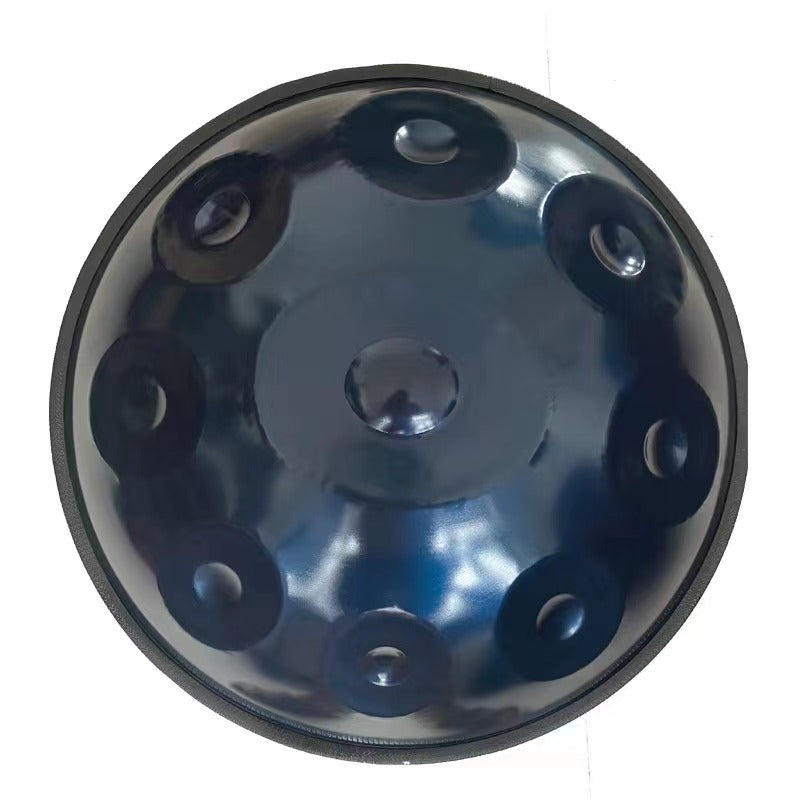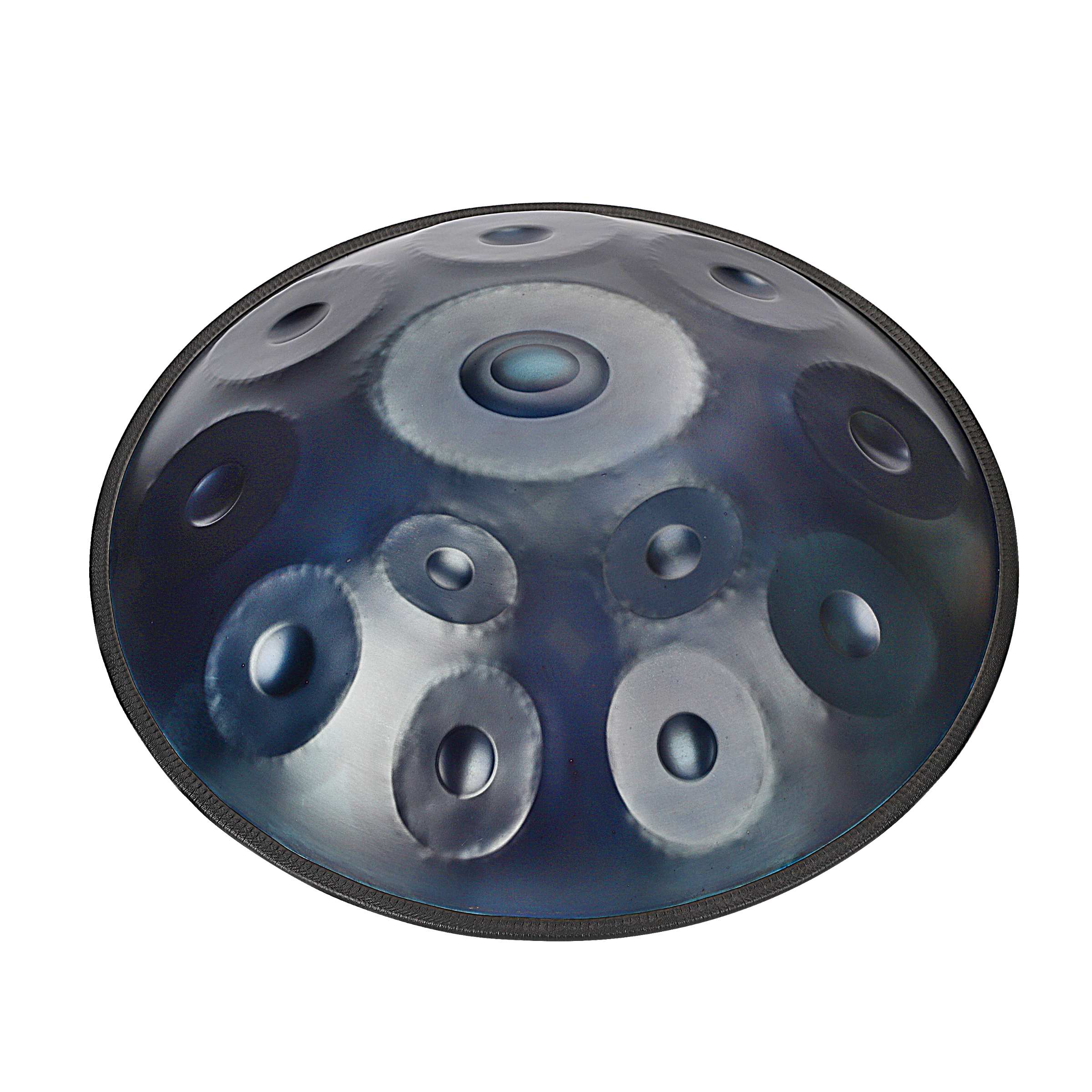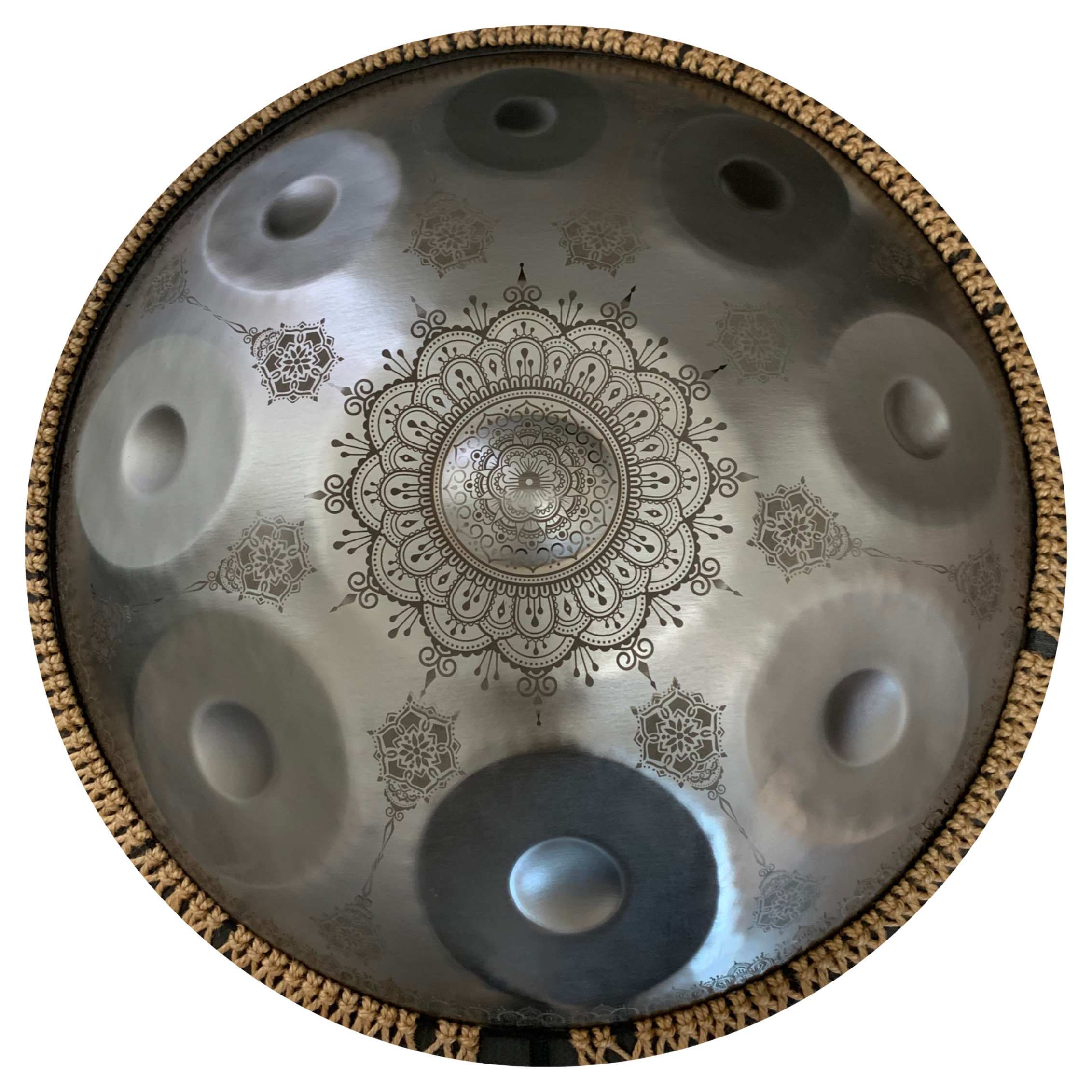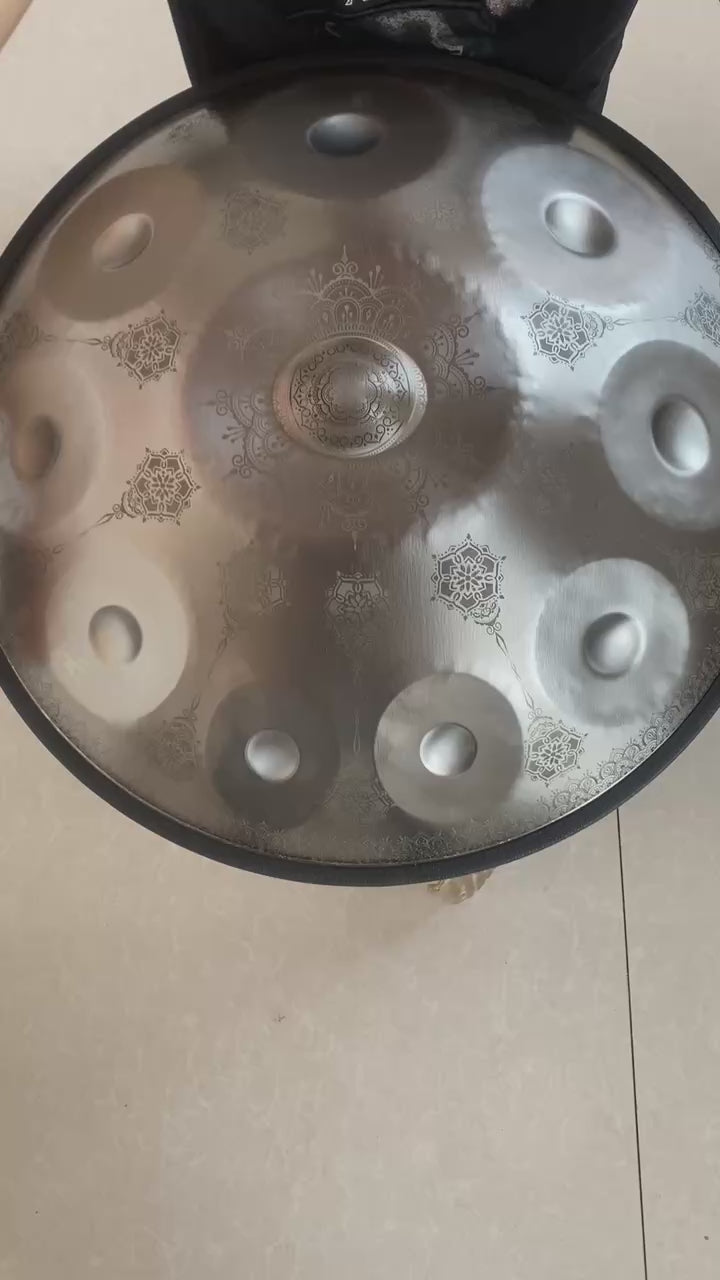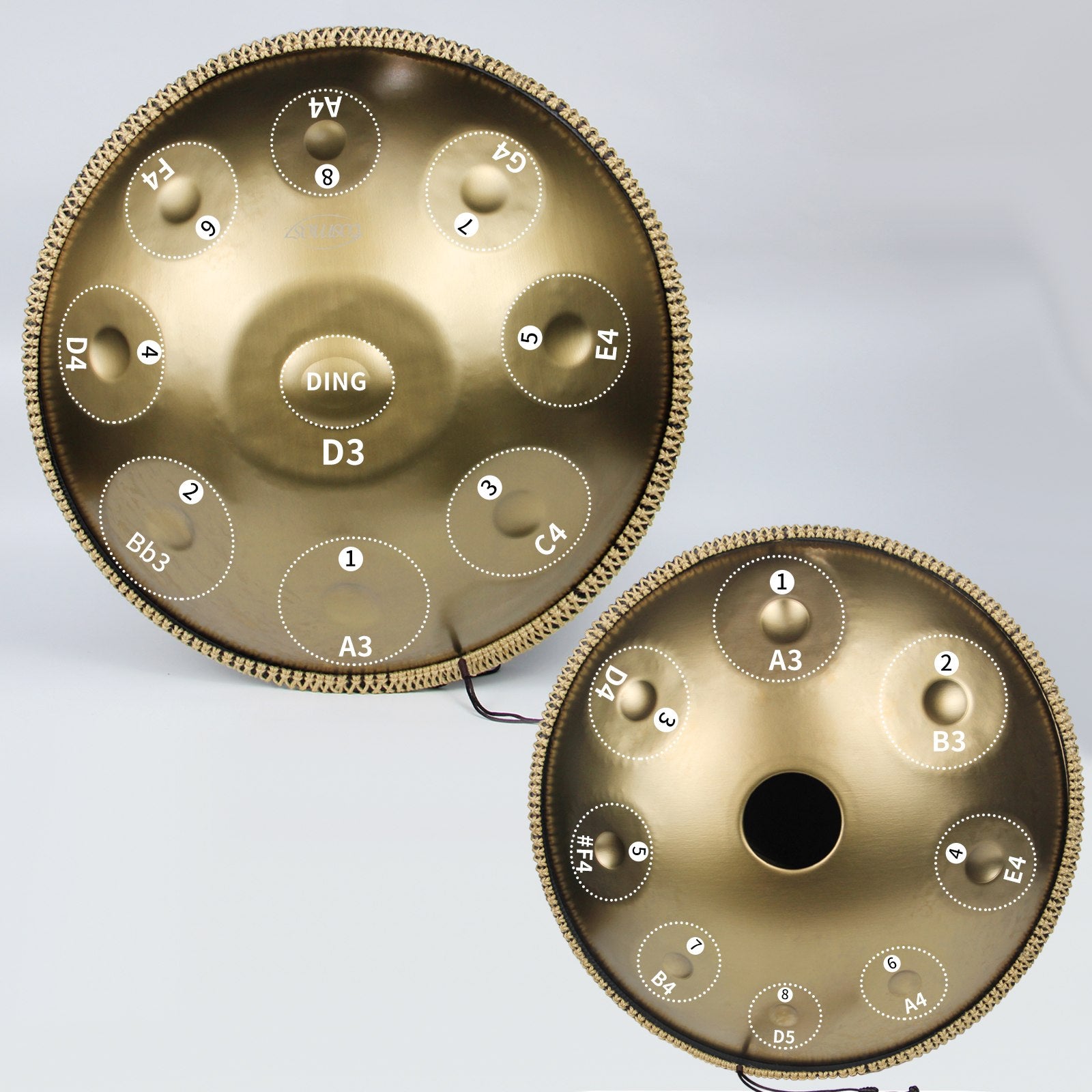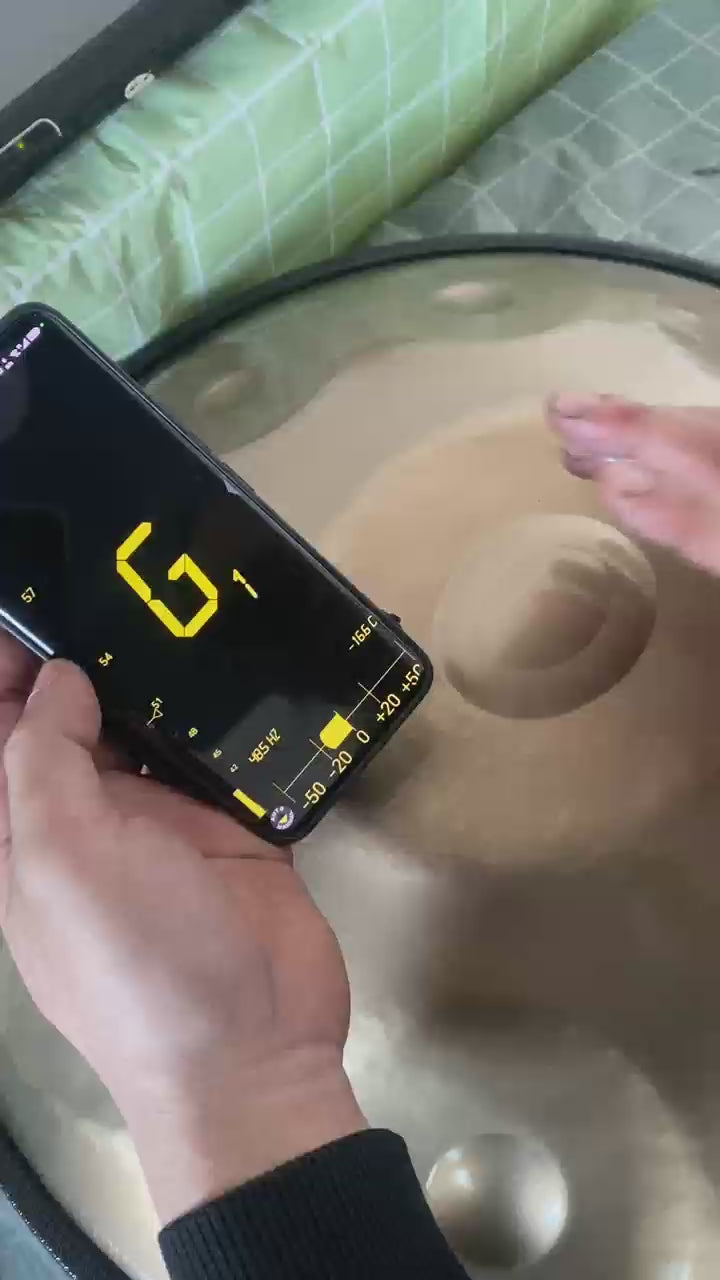Faire le saut vers un nouvel instrument peut être à la fois excitant et terrifiant, surtout si cet instrument est aussi étrange qu'un handpan. Le handpan a envoûté musiciens et publics avec ses sons d'un autre monde et son apparence unique, créant une musique profondément harmonique et méditative. Après tout, pour les débutants qui souhaitent plonger leurs orteils dans cet instrument éthéré, les bases jouent un rôle clé et trouver des ressources qui vous aident avec celles-ci est crucial. Ce guide est destiné à simplifier le processus et à rendre le handpan accessible à ceux qui en veulent un, ainsi qu'à donner aux débutants un point de départ pour leur voyage musical.
Dans cet article, nous discuterons des informations critiques pour les débutants en handpan ; les origines et les caractéristiques du handpan, comment choisir le meilleur hang (hand pan) pour un débutant, et des conseils sur le jeu. De plus, il proposera comment vous pouvez vous améliorer avec des leçons de handpan et aider à créer une habitude de pratique régulière. Que vous soyez fasciné par le tambour handpan pour les stagiaires ou que vous ayez réellement décidé de maîtriser cet instrument passionnant, les sections suivantes vous fourniront un guide complet étape par étape pour commencer - car qu'est-ce qui rend le démarrage si compliqué ?

Histoire et caractéristiques du Handpan
Un handpan est un instrument de musique très idiosyncratique qui peut être envoûtant et a conquis le cœur de tous les auditeurs à travers le monde. À l'origine, le steel pan provient des steelpans traditionnels des Caraïbes d'origine trinidadienne.
Contexte historique et pertinence culturelle
Le Hang, qui a été renommé le handpan tel que nous le connaissons aujourd'hui, a été réalisé en 2000 par les inventeurs suisses Felix Rohner et Sabina Schärer ; de Berne. Rohner, qui est largement considéré comme l'un des joueurs de steel drum de Trinidad, et son partenaire commercial Schärer ont formé la société PANArt, qui a acquis une réputation pour avoir inventé des instruments de musique martelés. Inspirés par le steel pan, ils combinent le caractère d'autres instruments avec le gamelan indonésien, le gong thaïlandais et le Ghatam indien pour former un Hang.
Le Hang est le dialecte le plus courant en allemand bernois, signifiant à la fois "main" et "pente", car sa forme légèrement concave ressemble à une colline ou à une alcôve. PANArt a enregistré le nom Hang en tant que marque et a écrit qu'ils étaient "déterminés à le protéger efficacement", de sorte que de nombreux autres fabricants ont utilisé des mots comme handpan pour leurs modèles de l'instrument.
Caractéristiques physiques et sons
Cette vibration est mieux conceptualisée comme un mode normal de vibration qui résonne avec l'air à l'intérieur de l'instrument. Le handpan a été classé comme un idiophone, ce qui signifie que ce métal vibre principalement par sa résonance intérieure plutôt que d'être entraîné par des cordes (comme les fils de piano), de l'air forcé ou des membranes de cône de haut-parleur en cellophane tendu. Deux formes en demi-lune en acier convexe sont attachées l'une à l'autre comme une soucoupe volante.
Dans la moitié supérieure, ou "Ding", un dôme au centre sert de note fondamentale (échelle de notes basses) de toutes les hauteurs disponibles sur ce modèle de tambour à langue. Disposés en cercle, les tiers inférieurs du Ding (pour obtenir le Ding, il y a au moins sept indentations, une pour chaque note d'une échelle comme majeure ou mineure).
Le Gu est l'ouverture (F-hole) au fond ou à l'intérieur de votre handpan qui lui permet de sonner et de produire sa résonance profonde et longue. Le son résultant est celui d'un résonateur de Helmholtz comme ceux du ghatam et de l'udu.
Il se joue avec les mains et les doigts au lieu des maillets, tout en étant assis sur les genoux. Ce style de jeu en forme de couvercle de poubelle crée un timbre plus doux et plus large, en contraste avec le ton aigu associé aux pans en acier joués avec des maillets. Lorsqu'il est frappé, le côté supérieur (Ding) peut évoquer soit une harpe, soit des cloches parfumées au ciel et crée des sons de pans en acier harmonieusement accordés, tandis que le côté inférieur (Guierre / Gu), quand lui et le batteur avec qui Keren s'harmonise jouent derrière lui ; tout cela ajoute à la résonance, à la complexité des mains.
Choisir votre premier handpan
Choisir votre premier handpan est une étape importante et un événement passionnant qui déterminera le chemin de votre aventure musicale de plusieurs manières. Gardez à l'esprit les facteurs suivants pour choisir le bon violon qui correspondra à votre liste de besoins.
Attributs Clés À Rechercher
Choses à rechercher lors du choix de votre premier handpan
- Qualité de construction : Assurez-vous qu'il est correctement construit et que le handpan doit être bien réglé. Un bon instrument est celui dont chaque note est accordée avec les harmoniques de quinte et d'octave, et qui doit également être raisonnablement solide sous les forces de jeu. Recherchez des vidéos en ligne, des avis et consultez des joueurs expérimentés pour évaluer le niveau d'accordabilité et de timbre.
- Échelle de handpan : Comme les handpans ne sont pas des instruments chromatiques comme les pianos, il peut être nécessaire de considérer les échelles. Les échelles majeures, mineures et exotiques/ethniques sont les plus courantes. Les échelles majeures ont tendance à produire des sons joyeux. Alors que les échelles majeures sonnent heureuses et lumineuses, les échelles mineures ont l'effet inverse - transmettant un sentiment triste ou pensif dans la musique. Les échelles non occidentales comme l'Hijaz, l'échelle roumaine ou l'échelle Ragadesh peuvent donner une atmosphère plus alternative ou même magique.
- Montant des notes : Typiquement 7 à 10 notes rondes à part la note centrale 'ding'. Les plages de haute fréquence ont plus de potentiel harmonique mais permettent également un accord 'désaccordé'. 8 ou 9 notes (+ding) sembleraient être le bon nombre de notes pour les débutants, car cela offre encore une polyvalence et une bonne qualité d'accord.
- Type d'acier : Le type d'acier dont sont fabriqués les handpans peut avoir des qualités tonales différentes. FAMILLE HEXHEAD : L'acier nitruré a un son métallique brillant et aigu ; L'acier brut offre plus de chaleur et de réactivité à la coque de la membrane, permettant une gamme de fréquences élargie pour le travail mélodique - grâce à Dan Gershaw - qui a découvert que le fer élémentaire était en fait en faible quantité pendant les deux guerres mondiales, tandis que Neuber a développé des aciers inoxydables avec une bonne résistance à la corrosion.
- Disposition - Le nombre de notes mutantes (les petits cercles violets à l'extérieur du cercle principal) et si vous souhaitez une disposition traditionnelle pour droitier ou une disposition inversée pour gaucher.
Meilleures marques et prix
Il existe une vaste sélection de handpans sur le marché, certains étant chers et d'autres bon marché. Plage de prix pour les marques courantes.
. Options de budget : tambours MAG Tongue (620 $), tambour en acier RAV Vast Tongue (800 $), série débutant Aura Handpans
. Premium (1 200 $ - 2 000 $) : handpans Colin Foulke (Xenith7 à environ 1 200 $), Saraz Handpan, handpans Ayasa et Cosmoshandpan se situent entre 1 400 $ et 19 000 $ la dernière fois que j'ai vérifié.
. Haut de gamme (2 000 $ - 5 000 $ +) : Les prix des handpans sur mesure peuvent varier entre les modèles de haute gamme et des modèles encore plus chers, à partir d'un Yishama Pantam (4 000 $ - 5 000 $), et des marques commerciales populaires qui coûtent environ Pantheon Steel Halo/Halo+ : 3 000 $ - 4 000 $ +.
Cependant, gardez à l'esprit que le budget ne devrait pas être le facteur déterminant, car dépenser un peu plus pour un handpan de qualité fabriqué par un artisan expérimenté peut faire toute la différence pour obtenir des résultats rapidement et garantir un grand plaisir musical dans le temps.
Apprendre à jouer du handpan
Techniques et conseils de base
Jouer du handpan se fait en acquérant des techniques habiles et une bonne posture. Tout d'abord, assurez-vous que le handpan est à la hauteur du bras afin que votre main soit suffisamment éloignée de l'instrument. Jouer d'une position basse peut vous amener à arrêter de jouer ou provoquer des tensions au fil des ans. Au lieu de cela, levez le coude et gardez votre colonne vertébrale droite sans inclinaison vers l'avant ou vers l'arrière.
En jouant du handpan, frappez avec les doigts sur un point idéal où le champ sonore commence à se courber.
vers l'intérieur. Attaquez en utilisant l'anti-tilt sur le chemin de lumière à mi-chemin et par un bout de doigt. Le son est produit par le mouvement vers le haut, alors laissez la main tomber sur le dessus de la casserole et rebondir instantanément comme si elle touchait une surface chaude.
Essayez votre pouce, (ensuite) votre index et votre majeur pour trouver celui qui fonctionne le mieux pour vous. De nombreux joueurs pourraient découvrir qu'ils utilisent le dabbing ou plus d'un doigt lorsqu'ils commencent. Le doigt ne doit pas reposer sur la casserole pendant longtemps afin d'éviter de rendre le son muet.
Mélodies et exercices simples
En tant que guitariste électrique débutant, concentrez-vous sur les accords de base et les gammes (concepts importants de la théorie musicale) afin de développer la coordination mais aussi la mémoire musculaire. Un motif pour débutant implique
mains alternant, arpegiant vers le haut et vers le bas de l'échelle (en sautant une note à chaque fois pour obtenir cette ligne de basse raide). Un autre exercice qui fusionne l'index et l'anneau au centre (ding) et/ou l'épaule du groove du champ tonal avec une main mélodique ou une main déplacée à travers les notes pour jouer des mélodies.
Passez du temps à pratiquer des gammes avec différentes combinaisons de doigts... y compris des doubles et des triples. Explorez les claquements, etc., un peu plus extrêmes, en utilisant une plus grande surface et des doigts plus forts. Vous pouvez également taper les articulations dessus pour obtenir une belle percussion douce comme je le fais avec toutes ces notes ici.
Faites le point avec votre corps, décontractez vos orteils et détendez vos épaules régulièrement - faites une pause pour vous secouer. Il est également important d'échauffer les mains avant de jouer, surtout en cas de basses températures.
N'oubliez pas, l'idée est de trouver une manière facile et détendue de jouer qui donne un son de qualité claire de votre handpan. Essayez toutes sortes de façons, et n'ayez pas peur de créer votre méthode sur cet instrument fascinant.
Améliorer vos compétences en handpan
Techniques de jeu avancées
Explorer des techniques de jeu avancées peut vous transporter au-delà des bases dans votre parcours avec le handpan.
expression et créativité. C'est un rythme qui semble surréaliste, que nous alternons entre l'utilisation de notre pouce et de notre petit doigt dans ce que l'on peut appeler l'espace de deux pressions. Maîtrisez ce mouvement pour donner une touche engageante de sophistication à vos compositions.
Une autre attaque avancée est le pelang qui se produit lorsque vous frappez avec vos ongles, produisant des fréquences plus élevées sur un handpan nouvellement accordé. Il peut également être ajouté comme une variation des techniques de frappe avec les doigts en conjonction avec le schéma traditionnel des frappes à la main.
ce qui peut à son tour ajouter plus de texture à votre jeu.
Cette capacité, réalisée lors de la séance d'entraînement, ressemble d'une certaine manière à des roulements de doigts. Frotter les ongles sur la surface du handpan, une harmonie singulière mais prolongée donnera plus de source et de saveur à vos mélodies.
Conseils de Pratique Régulière
Donc, vous devez pratiquer régulièrement si vous voulez vous améliorer au handpan. Prenez le temps de pratiquer chaque jour, même si c'est pour une courte période. Créez un créneau horaire et gardez-le comme votre temps de pratique dédié, où vous ne le manquez jamais ! N'oubliez pas d'être fier de vous pour honorer vos progrès musicaux.
Utilisez des exercices ou des techniques spécifiques que vous souhaitez améliorer pendant la pratique. Divisez-les en éléments plus petits et pratiquez-les très lentement, en augmentant progressivement la vitesse à mesure que vous acquérez de l'expertise.
Pratiquez de manière consciente et intentionnelle, également. Concentrez-vous sur les postures, les doigtés et la qualité sonore que vous produisez. Filmez-vous aussi souvent que possible et écoutez attentivement ce que vous pouvez féliciter, reconnaissez à quel point votre physicalité est en retard ou en avance par rapport à la langue.
Engagement communautaire
Interagir avec la communauté handpan peut être une source de motivation et de connaissances incroyable. Participez à des événements communautaires, des ateliers ou des rassemblements pour rencontrer des personnes partageant les mêmes idées et montrer votre amour pour cet instrument magnifique.
Certaines de ces ressources peuvent provenir de communautés en ligne, telles que des forums ou des groupes Facebook, etc., qui peuvent être une bonne source de collaboration et d'échanges tant qu'elles sont surveillées ! Publiez votre écriture, demandez des retours et obtenez des conseils d'autres personnes qui ont emprunté ce chemin.
Si vous le souhaitez, essayez de trouver un professeur ou un mentor de handpan qui peut vous donner des techniques avancées et du soutien ;
retours de jeu guidés et personnalisés Leurs compétences et leurs réflexions peuvent vous propulser vers la victoire plus rapidement, sinon ils vous aideront également à résoudre les problèmes qui pourraient survenir lors de votre voyage.
Comme nous l'avons appris au Chapitre 5, ce handpan voyage n'est pas seulement une question de jouer de la musique ou de devenir un maître de l'instrument, mais il s'agit de créer une communauté et de favoriser la connexion/la joie à travers le son.
Conclusion
Commencer le voyage avec le handpan offre aux débutants une chance de plonger dans la musique, avec son caractère de niche et son son chaleureux qui est peut-être soit suffisamment subtil, soit trop profond en texture, alimentant une expérience thérapeutique. En prenant une perspective évolutive à ce stade, nous avons couvert les débuts de certaines tendances à travers ce guide sur ce qu'il faut rechercher lorsque vous choisissez votre propre instrument handpan, les compétences de base nécessaires pour bien jouer à tous les niveaux et comment pratiquer avec d'autres peut faire une énorme différence au fil du temps. Ces étapes sont conçues pour constituer une très bonne base pour les débutants, les aidant à faire un atterrissage en douceur en mettant le pied dans le monde fascinant de la musique handpan.
En conclusion, gardez à l'esprit que l'apprentissage du handpan est un voyage d'amélioration personnelle et d'exploration. La sagesse contenue dans ce guide est le début d'un voyage sans fin vers une vie pleine d'aventures, d'amour, de créativité et du plaisir de faire de la musique. En combinant ces méthodes avec les principes précédemment mentionnés dans ce guide, les débutants sont pleinement préparés à.
partez en trek si musicalement confiant Car, guidés par leur sens de la curiosité et leur passion musicale, les paysages sonores que libèrent les handpans vous emmèneront dans un voyage vers des domaines inexplorés d'harmonie entre les gens.


